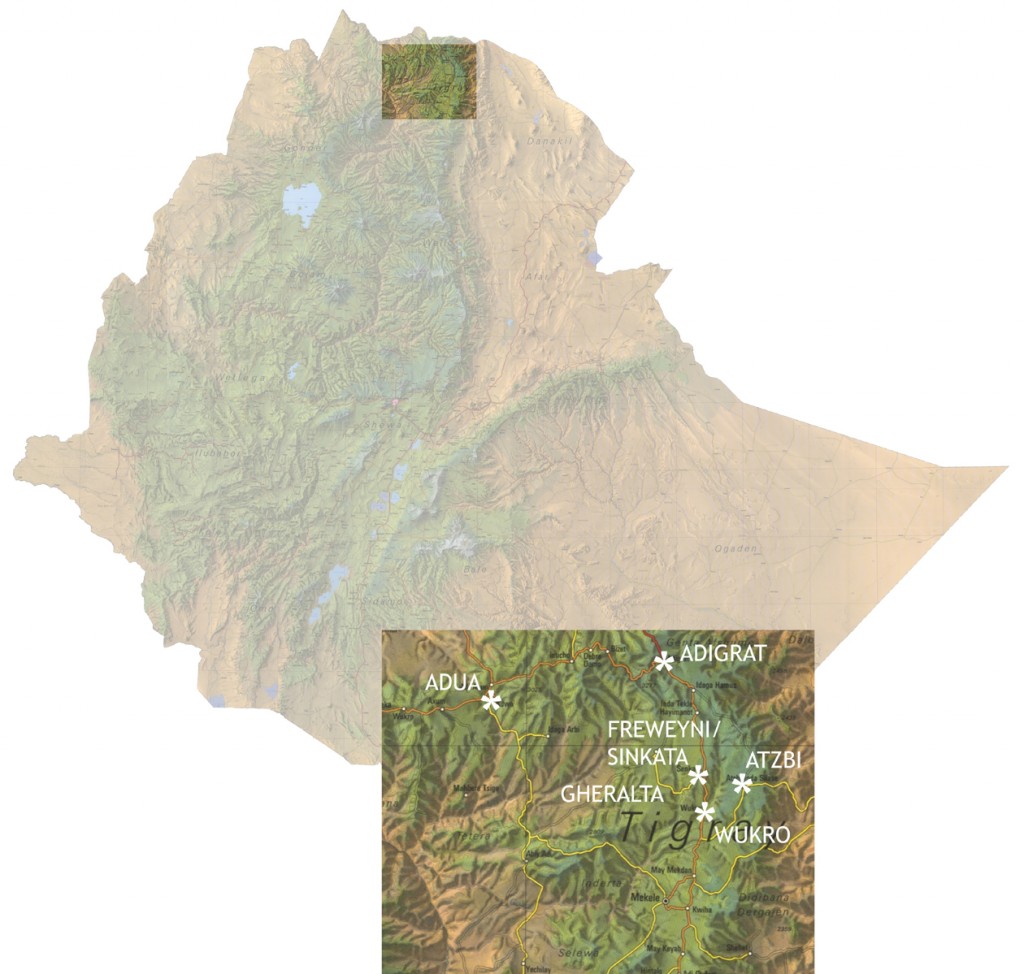Rock-hewn churches are found not only in Lalibela, but throughout the Ethiopian highlands. These churches are especially concentrated in the North of the country in the Tigray region. Well over 150 such churches are known of today – although only ten had been discovered before 1963! All except for 26 are still in use today.
In contrast to the churches in Lalibela, the rock churches in Tigray are mostly semi-monolithic and were often built out of vertical cliff walls or on rocky outcrops at high altitudes. The result is a fairy tale setting and view with a very special and solemn atmosphere.
The exact origins of these churches are unknown. Scientific estimates date the earliest buildings back to the 10th and 11th centuries. Others have dated the buildings as far back as the 7th and 8th centuries. The youngest of the churches were likely erected in the 14th century. What is undisputed is that these exceptional structures were built during a period of upheaval. From the time when the star of the old Axumite Empire began to fall, through the short reign of the Zagwe dynasty (11th – 13th centuries) until the power fell back to the Solomonic dynasty. The Orthodox-Christian culture as it exists in Ethiopia today was formed during this era and the numerous rock churches of the north are today’s visible, stone-carved, evidence.
The layout of the church often resembles that of an early Christian basilica of Oriental origin. Beginning in the west end with a small vestibule (narthex) followed by a three-aisled nave and closing in the east with the cella or inner chamber. Near the area around the town of Wukro a square floor plan inscribed with a cross is also common. Often the facades are built in front and the interior is decorated with wall paintings.
The rock-hewn churches are, however, not the oldest sacred buildings in the region. Their predecessors were built using the ancient Axumite building traditions and are widely used throughout Tigray. These monastery or church buildings were made of a wooden framework often decorated with intricate carvings. Stones and rubble filled the spaces in between, creating a two-tone exterior with layers of dark wood and light-coloured stone. The placement of the monastery is often particular – some were built in rock caves (i.e. the Yemrehanna Kristos monastery of Lalibela) and others on rocky plateaus (i.e. Debre Damo).
The greatest concentration of (rock) churches and monasteries can be found between Wukro and Freweyni/Sinkata, in Atzbi, Degum, Adigrat and Adua and the beautiful Gheralta area.
.
Food & Accommodation: The wonderfully located Gheralta Lodge is an ideal starting point for exploring the surrounding areas and also includes a good restaurant.
.
.

